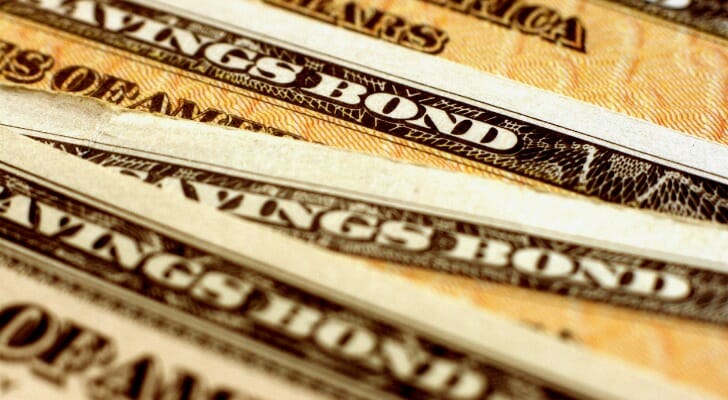
You need to take into account several factors before you invest in dividend-growing stocks. You should aim to achieve positive growth in earnings per shares over the next five year, so your dividend risk score should not exceed 'C'. Stocks that pay a higher dividend rate than the S&P 500 Index are considered to be the best dividend growth stocks. We will be discussing the top stocks in the Consumer Discretionary industry, including NKE. Target and Cigna also featured.
NKE is the top-ranked Stock in the Consumer Discretionary Sector
The Consumer Discretionary category includes goods and service such as clothing and restaurant, and travel. These stocks generally perform well in good economic conditions, but can be difficult to sell during tough economic times. This sector boasts several top performers including NKE. The company's recent earnings growth has been especially encouraging, as has its dividend growth rate.
Nike is a well-known dividend growth stock and is popular in Vanilla and Active ETFs. Broad-based ETFs are more likely to hold Nike shares. Fidelity High Divid ETF (FDX), however, is one of the best performing ETFs with NKE holdings.

Sheng Siong
Sheng Siong is the perfect choice for investors who are looking for steady dividend payouts. This Singaporean bank has been increasing its dividend payouts every year since 2011. The company has a history in raising it year after année. The company distributes dividends twice annually. In February is the final and May is the interim. The company's dividend has risen from 2.75 Singapore cents per share in 2012 to over 11 percent annually since 2015.
The Sheng Siong group companies can provide steady growth in dividend yields for investors. The company owns 63 supermarkets across Singapore and is expanding into China. Despite recent Singaporean authorities' announcements about further tightening, shares of the company soared 11% by 14 May. Investors will receive a higher dividend yield than the Singapore stock markets. You should make sure to read Sheng Siong's financial statements before you invest.
Target
Target is a great option if you're looking for steady cash flow, but also to increase your dividend payouts. Target's free cash flow, which is stronger than the dividend payments, is strong. The company has paid just over $1 million in dividends in the last five years and generated $5.4Billion in free cashflow in the last five. Check out our Dividend growth stocks model portfolio to see more.
Target, a discount retail giant has recently announced a 20.0% raise in its quarterly distribution. The company's 55-year history of growing its dividends is impressive. It is the largest general merchandise discount retailer in the country and competes against Amazon, Costco, Walmart, and Amazon when it comes to consumer spending. Target focuses on delivering better quality goods and maintaining a competitive price point. Target's stock price rose more than 20% over the past 12 months, making it an attractive investment for investors who are looking for dividend growth.

Cigna
Cigna dividend-growth stocks can give you the income that you desire, without the need to spend a lot. If the company is committed to long-term growth, its dividend payout ratio may be lower than other companies. The company's last dividend payout occurred on 22 June 2022. Stockholders who purchased stock before this date will still receive a dividend payment.
Cigna Healthcare (Evernorth) and Evernorth (Cigna Healthcare) are two of the segments. Evernorth offers pharmacy benefits management (PBM) solutions and healthcare services to consumers. The healthcare segment includes medical, dental, as well as related products. Evernorth focuses primarily on U.S. Government and corporate business. Cigna Healthcare offers health insurance products in the United States and international services.
FAQ
What is a Bond?
A bond agreement between two parties where money changes hands for goods and services. It is also known as a contract.
A bond is typically written on paper, signed by both parties. This document includes details like the date, amount due, interest rate, and so on.
The bond is used when risks are involved, such as if a business fails or someone breaks a promise.
Sometimes bonds can be used with other types loans like mortgages. This means that the borrower has to pay the loan back plus any interest.
Bonds can also help raise money for major projects, such as the construction of roads and bridges or hospitals.
A bond becomes due upon maturity. That means the owner of the bond gets paid back the principal sum plus any interest.
Lenders can lose their money if they fail to pay back a bond.
How can people lose their money in the stock exchange?
The stock market isn't a place where you can make money by selling high and buying low. It is a place where you can make money by selling high and buying low.
The stock market is an arena for people who are willing to take on risks. They will buy stocks at too low prices and then sell them when they feel they are too high.
They are hoping to benefit from the market's downs and ups. They might lose everything if they don’t pay attention.
What is a Reit?
A real estate investment Trust (REIT), or real estate trust, is an entity which owns income-producing property such as office buildings, shopping centres, offices buildings, hotels and industrial parks. These companies are publicly traded and pay dividends to shareholders, instead of paying corporate tax.
They are similar companies, but they own only property and do not manufacture goods.
Are stocks a marketable security?
Stock can be used to invest in company shares. This is done via a brokerage firm where you purchase stocks and bonds.
You can also invest in mutual funds or individual stocks. In fact, there are more than 50,000 mutual fund options out there.
The key difference between these methods is how you make money. Direct investment allows you to earn income through dividends from the company. Stock trading is where you trade stocks or bonds to make profits.
In both cases you're buying ownership of a corporation or business. But, you can become a shareholder by purchasing a portion of a company. This allows you to receive dividends according to how much the company makes.
Stock trading gives you the option to either short-sell (borrow a stock) and hope it drops below your cost or go long-term by holding onto the shares, hoping that their value increases.
There are three types for stock trades. They are called, put and exchange-traded. Call and put options allow you to purchase or sell a stock at a fixed price within a time limit. ETFs, which track a collection of stocks, are very similar to mutual funds.
Stock trading is very popular because it allows investors to participate in the growth of a company without having to manage day-to-day operations.
Although stock trading requires a lot of study and planning, it can provide great returns for those who do it well. If you decide to pursue this career path, you'll need to learn the basics of finance, accounting, and economics.
What is security at the stock market and what does it mean?
Security is an asset that produces income for its owner. Shares in companies are the most popular type of security.
A company could issue bonds, preferred stocks or common stocks.
The value of a share depends on the earnings per share (EPS) and dividends the company pays.
If you purchase shares, you become a shareholder in the business. You also have a right to future profits. If the company pays a dividend, you receive money from the company.
You can sell shares at any moment.
What is the role of the Securities and Exchange Commission?
Securities exchanges, broker-dealers and investment companies are all regulated by the SEC. It enforces federal securities laws.
What is a Mutual Fund?
Mutual funds are pools of money invested in securities. They offer diversification by allowing all types and investments to be included in the pool. This helps to reduce risk.
Professional managers manage mutual funds and make investment decisions. Some funds permit investors to manage the portfolios they own.
Most people choose mutual funds over individual stocks because they are easier to understand and less risky.
Statistics
- Our focus on Main Street investors reflects the fact that American households own $38 trillion worth of equities, more than 59 percent of the U.S. equity market either directly or indirectly through mutual funds, retirement accounts, and other investments. (sec.gov)
- US resident who opens a new IBKR Pro individual or joint account receives a 0.25% rate reduction on margin loans. (nerdwallet.com)
- "If all of your money's in one stock, you could potentially lose 50% of it overnight," Moore says. (nerdwallet.com)
- Even if you find talent for trading stocks, allocating more than 10% of your portfolio to an individual stock can expose your savings to too much volatility. (nerdwallet.com)
External Links
How To
How to Trade Stock Markets
Stock trading can be described as the buying and selling of stocks, bonds or commodities, currency, derivatives, or other assets. Trading is French for "trading", which means someone who buys or sells. Traders sell and buy securities to make profit. It is one of the oldest forms of financial investment.
There are many ways to invest in the stock market. There are three types that you can invest in the stock market: active, passive, or hybrid. Passive investors do nothing except watch their investments grow while actively traded investors try to pick winning companies and profit from them. Hybrid investors use a combination of these two approaches.
Index funds that track broad indexes such as the Dow Jones Industrial Average or S&P 500 are passive investments. This type of investing is very popular as it allows you the opportunity to reap the benefits and not have to worry about the risks. You can simply relax and let the investments work for yourself.
Active investing involves picking specific companies and analyzing their performance. The factors that active investors consider include earnings growth, return of equity, debt ratios and P/E ratios, cash flow, book values, dividend payout, management, share price history, and more. They then decide whether they will buy shares or not. If they believe that the company has a low value, they will invest in shares to increase the price. On the other side, if the company is valued too high, they will wait until it drops before buying shares.
Hybrid investing blends elements of both active and passive investing. For example, you might want to choose a fund that tracks many stocks, but you also want to choose several companies yourself. You would then put a portion of your portfolio in a passively managed fund, and another part in a group of actively managed funds.